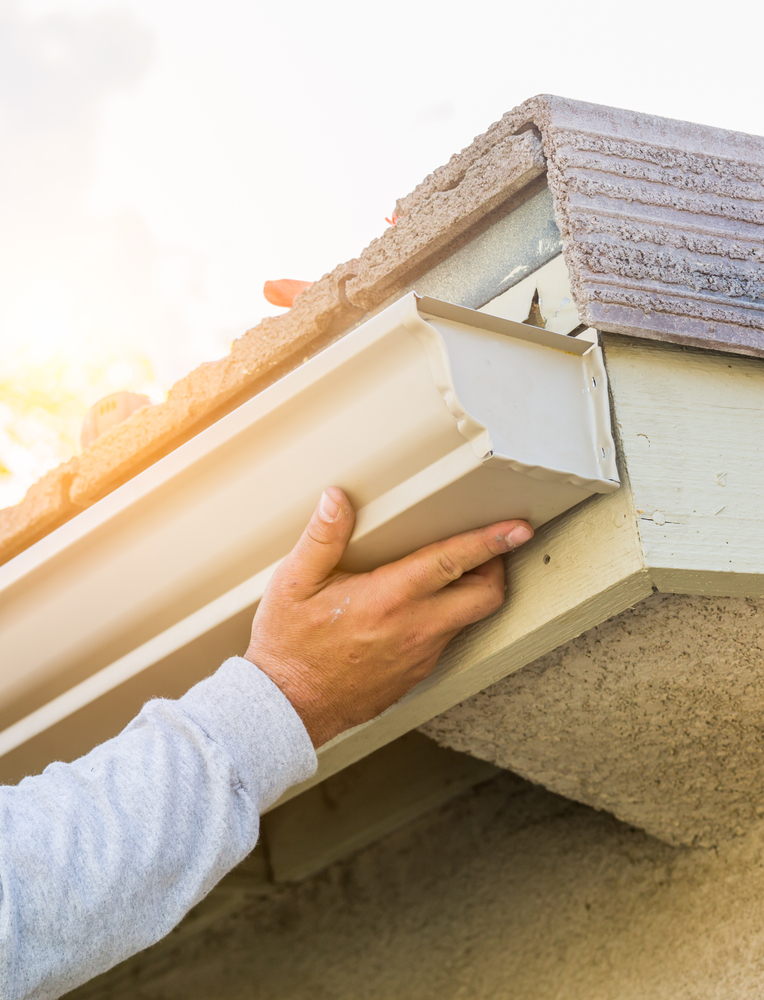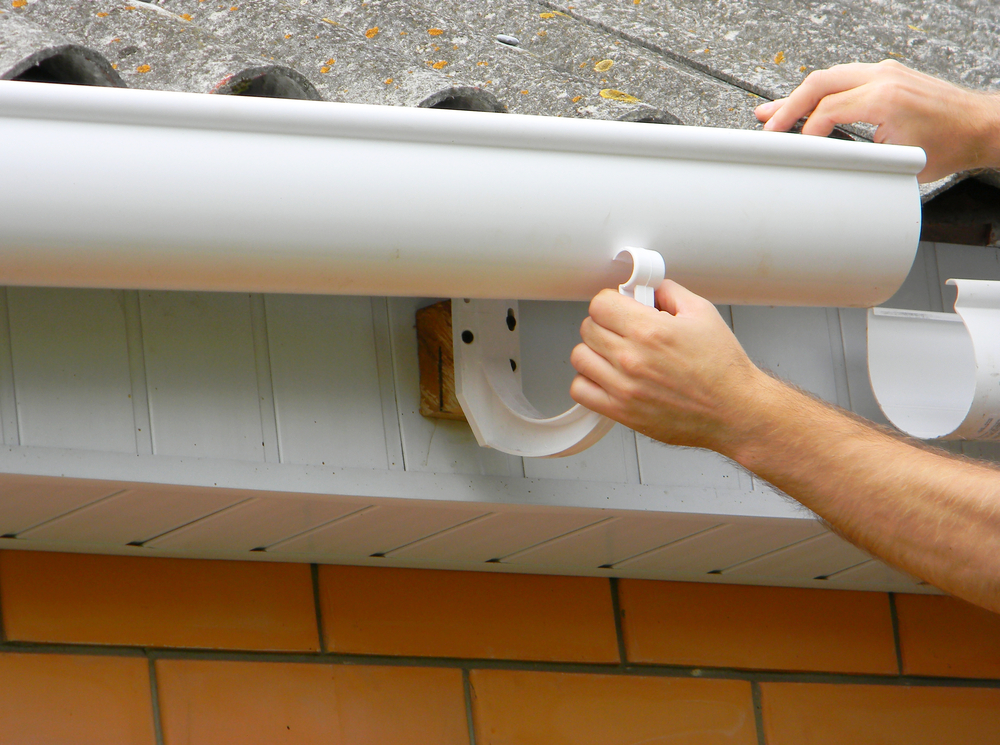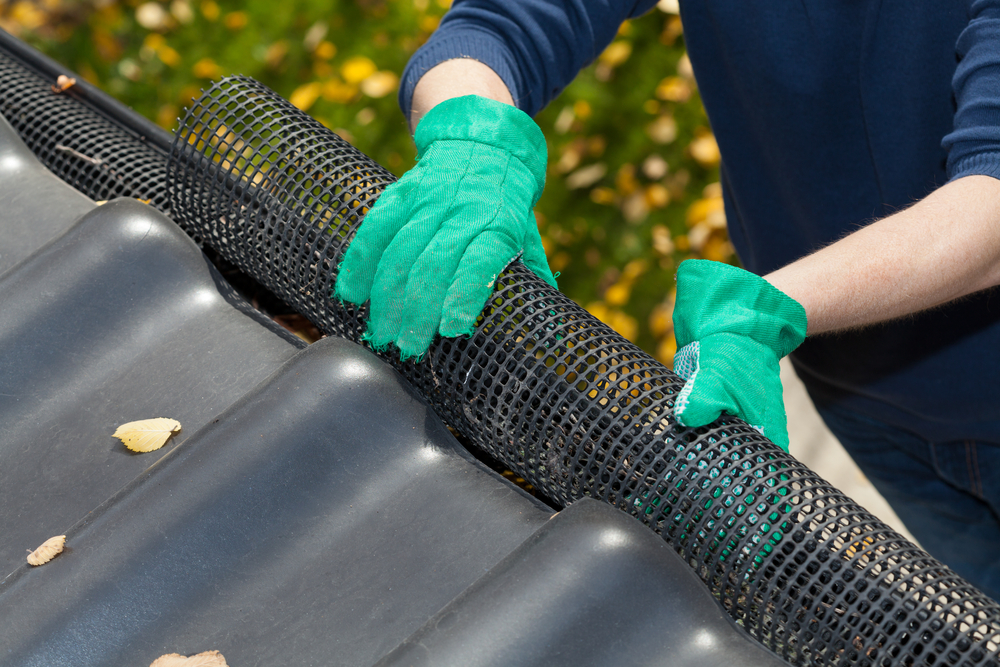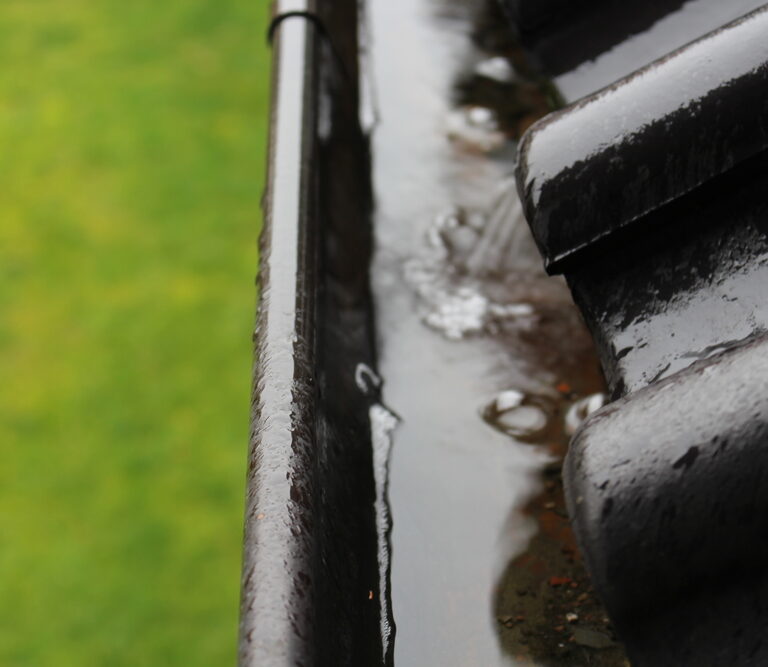Rain is an inevitable part of life, as even the driest parts of the country get some precipitation. As a result, you’ll want to learn about the various types of rain gutters on the market to add some rainfall protection to your home.
Rain gutters have a relatively simple job, as they are responsible for catching any water that runs off your roof and transporting it to the downspout. From there, the downspout directs the moisture to the ground.
Gutters are essential components of your home, but they’re also relatively simple contraptions. Here’s a look at the various gutter designs and some common materials you’ll find when searching for these items.
The Purpose of Rain Gutters
Of course, gutters catch water as it runs down your roof, but why is this job important?
Gutters achieve a couple of different goals, starting with protecting your home’s foundation from water damage. If water from your roof could run wherever it wants, it would slowly eat away at anything under its edges.
Gutters catch this water before it can fall off the edge of the roof and divert it away from the home’s foundation, saving you from having to deal with its erosion.
You should also know that gutters can prevent water from pooling at certain locations on your property. When water runs off your roof, it will naturally head to the lowest point. When this occurs, most rainwater could end up in one or two locations, leading to pooling and potential flooding.
Finally, gutters can save you from getting wet. Without rain gutters, water would run off the edges of your roof whenever there’s precipitation. This runoff could result in a significant amount of water landing on you as you attempt to enter or exit the building.
Keep in mind that gutters aren’t necessary on flat roofs because you’ll have a different drainage system. If your home has a sloped roof, though, it’s essential that you have rain gutters and maintain them year-round.
Rain Gutter Designs
As you shop for rain gutters, you’ll find that most stores have a couple of different designs. Both types of rain gutters work the same way, as the differences are primarily aesthetic, although K-style gutters can hold a bit more water.
K-Style

Most homes built since the 1960s have K-style gutters, which have flat bottoms and curves that mimic the appearance of crown molding. The curves come in various styles, allowing you to personalize the exterior of your home.
K-style gutters also have a flat back, so they fit right against the fascia board. You’ll attach these gutters by nailing them directly to this board.
Half-Round

As its name suggests, half-round gutters look like a tube that’s been cut in half. This rain gutter style is commonly found on homes built before the 1960s, but the products are still available today if you want to go with a retro look on your home’s exterior.
One issue with half-round gutters is that their shape makes it impossible for them to sit flush against the fascia board, so you’ll have to attach brackets when installing them.
Fascia Gutters
You won’t find fascia gutters at your local hardware store because they’re custom items you’ll have built especially for your home. Generally, these gutters are constructed of a single piece of aluminum that you’ll attach directly to the edge of the roof.
Homeowners love fascia gutters because they create a sleek appearance, and they don’t have seams that could leak. The drawback is the cost, as they can end up costing about twice as much as K-style and half-round options.
The type of gutter you select is only half the battle, as there are various materials to consider, as well.
5 Rain Gutter Materials
Once you figure out what type of rain gutter you wish to install, it’s time to look at some materials. Historically, homes would use wood gutters, but they, as you might expect, were incredibly prone to rot and water damage. Modern materials are far more efficient because they’ll last for decades after installation.
1) Aluminum
Aluminum is lightweight, inexpensive, and durable, which is perhaps why it’s the most common rain gutter material on the market. These gutters come in three thickness options – .025-inch, .027-inch, and .032-inch – and are usually available in ten-foot sections. You’ll also appreciate that aluminum is paintable, weatherproof, and lasts for about 25 years.
The one drawback of aluminum rain gutters is that the material can bend or dent when there’s an impact, so you’ll want to be careful when climbing onto your roof and keep tree branches clear.
2) Vinyl
You’ll find that vinyl has many of the same benefits as aluminum because the product is lightweight, inexpensive, paintable, and weatherproof. It also won’t rust and is easy to install.
However, vinyl isn’t as durable as aluminum because it’s prone to cracking in extreme heat or cold and could damage if you lean a ladder against it. You might also find that the color of your vinyl rain gutters fades in the sun.
3) Zinc
If you want your rain gutters to last for as long as you own your home, zinc is the way to go. This material is good for about 50 years, and it won’t rust, fade, or warp over time, either.
It’s worth noting, though, that zinc is one of the most expensive rain gutter materials and requires professional installation because you must weld the joints and ends. This product is also prone to damage from salty air or the acidic runoff from cedar shakes on your roof.
4) Steel
Those who live in areas with extreme temperatures might consider investing in steel rain gutters because they do the best job of standing up to the elements. This material is solid and durable, and if you invest in stainless steel gutters, you won’t have to worry about rust.
If you choose galvanized steel gutters, rust is an issue, so this product might only last for about 15 years. Both types of steel are heavy, and so professional assistance is usually recommended. Keep in mind that stainless steel is about twice the price of galvanized, too.
5) Copper
Perhaps the most attractive type of rain gutter on the market is copper, which provides a beautiful color and a classic appearance. Copper is also highly durable in any conditions, as extreme cold and heat won’t faze the material, and it can last for up to 100 years if properly maintained.
The issue, of course, is that copper is the most expensive rain gutter material, which is why you don’t see it on many houses. Copper gutters also require professional installation, adding even more to your upfront cost.
As you can see, there are plenty of rain gutter options available, and you can make your decision based on how much you’re willing to spend and the exterior appearance you wish to achieve.
Downspouts and Guards

You aren’t done with the job once your gutters are in place because you’ll need to install your downspouts and guards.
As you purchase your gutters, you’ll strategically buy pieces with an opening that attaches to a downspout. It’s recommended that you install one downspout for every 30 or 40 feet of gutter on your home. That way, your gutters don’t end up overflowing during heavy rainfall.
You’ll typically secure the downspout to the side of your home and connect a curved piece at the end, leading the water away from your foundation.
You might also think about installing leaf guards over your gutters. These guards are pieces of metal or mesh that attach to the gutter’s topside opening and prevent debris from getting in. The benefit is that you don’t have to worry about leaves and other items clogging your gutters and downspouts in the fall.
Do You Need Rain Gutters?
In most cases, a home should have rain gutters, although there are some specific circumstances where they aren’t necessary.
First, if your home’s roof has an overhang of 12-inches or more, water should naturally flow away from the foundation without the use of gutters. You might still want to invest in some, though, to ensure you don’t get too wet when trying to enter your home.
Gutters might not be necessary if you live in an extremely arid climate because you might not get enough rain the make the investment worth your while.
If concrete completely surrounds your home, gutters could be optional because there’s a chance that your patio and driveway act as a natural protection for the house’s foundation. You’ll want to inspect where water flows when it rains to ensure it isn’t an issue.
Finally, when your house is higher than the surrounding landscape, such as being built on a small hill, it’s unlikely that water would pool around your foundation. As a result, gutters might not be necessary.
Carefully look at your property and see where water tends to flow to determine whether rain gutters are an essential investment for you or merely an option.
Wrapping Up
Although there are many rain gutter types available, your choice will be a personal one that comes down to the look you want to achieve and the price you’re willing to pay. The more expensive options tend to have longer lifespans than cheaper products, but the upfront cost can double or triple your investment.
You’ll also want to consider the installation process and how much that could cost you. Overall, your best bet is to figure out which style of rain gutter would look best on your home and then start looking at the available options.
